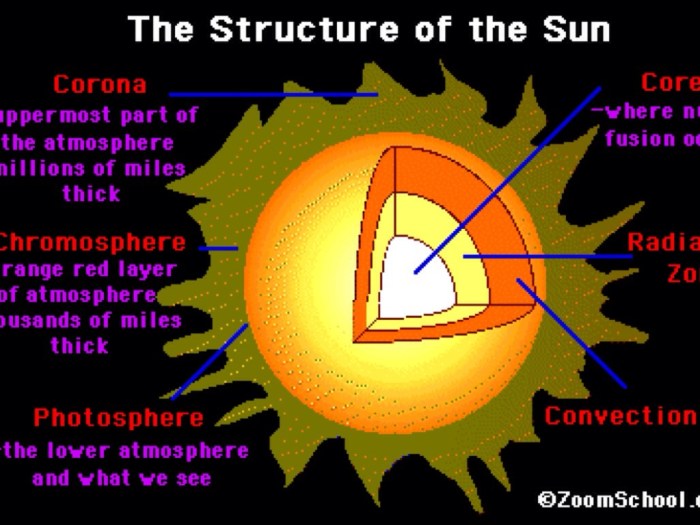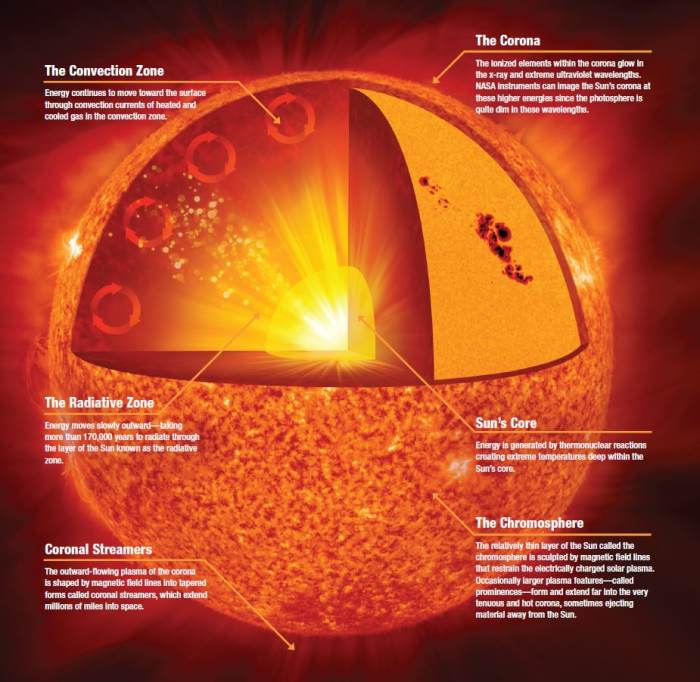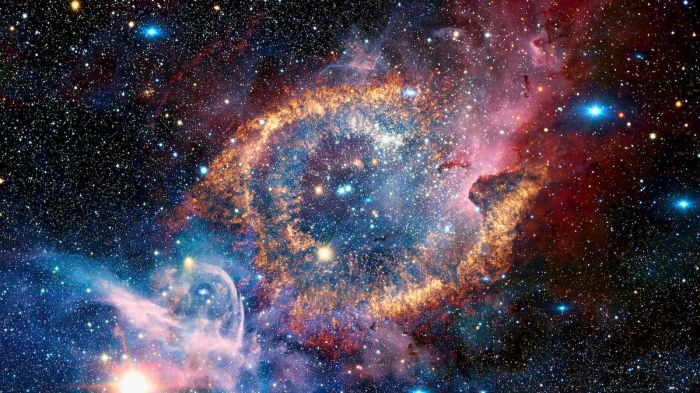The sun understanding main ideas – The Sun, the celestial beacon of our solar system, plays a pivotal role in shaping the cosmic tapestry around us. This article delves into the intricacies of the Sun’s influence, exploring its physical characteristics, energy output, and profound impact on Earth and the wider solar system.
From its gravitational dominance to its life-sustaining energy, the Sun’s significance extends far beyond our planet, shaping the orbits of celestial bodies and influencing the very fabric of our universe.
The Sun’s Role in the Solar System

The Sun is the central and dominant body of our solar system, a vast gravitationally bound system of celestial objects. It is a massive ball of hot plasma that emits vast amounts of energy, shaping the characteristics and dynamics of the surrounding celestial bodies.
The Sun’s gravitational pull is the primary force that maintains the orbits of the planets, moons, asteroids, and comets within the solar system. Its immense mass exerts a powerful gravitational field that governs the movements and interactions of these celestial bodies.
Gravitational Interactions
- The Sun’s gravity keeps the planets in their respective orbits, preventing them from drifting away into space.
- The Sun’s gravitational influence also affects the trajectories of comets and asteroids, occasionally altering their paths and potentially posing a threat to Earth.
- The Sun’s gravity plays a crucial role in shaping the orbits of moons around planets, influencing their tidal forces and dynamics.
The Sun’s Energy Output

The Sun’s energy is generated through nuclear fusion reactions that occur in its core. Hydrogen atoms combine to form helium, releasing tremendous amounts of energy in the form of photons.
Electromagnetic Radiation
- The Sun emits a wide range of electromagnetic radiation, including visible light, ultraviolet (UV) radiation, and X-rays.
- Visible light is the portion of the electromagnetic spectrum that humans can perceive, enabling us to see the Sun.
- UV radiation is a high-energy form of electromagnetic radiation that can cause sunburn and other harmful effects on living organisms.
- X-rays are the most energetic form of electromagnetic radiation emitted by the Sun and can be detected by specialized instruments.
Solar Flares and Coronal Mass Ejections
The Sun’s magnetic field undergoes periodic changes, resulting in the occurrence of solar flares and coronal mass ejections (CMEs).
- Solar flares are sudden and intense bursts of energy released from the Sun’s surface, emitting high levels of UV radiation and X-rays.
- CMEs are large eruptions of plasma from the Sun’s corona that can travel through space and interact with Earth’s magnetic field, potentially disrupting communication systems and power grids.
The Sun’s Physical Characteristics: The Sun Understanding Main Ideas

The Sun is a massive ball of hot plasma with a complex internal structure and a dynamic surface.
Composition and Structure
- The Sun is primarily composed of hydrogen (73%) and helium (25%), with trace amounts of other elements.
- The Sun’s interior is divided into the core, radiative zone, and convective zone, each with distinct characteristics.
- The core is the hottest and densest region where nuclear fusion occurs, releasing vast amounts of energy.
Magnetic Field and Solar Activity
The Sun has a strong magnetic field that is responsible for many of its observed phenomena.
- The Sun’s magnetic field generates sunspots, which are dark areas on the Sun’s surface that are cooler than their surroundings.
- Solar flares and CMEs are caused by the interaction and reconnection of magnetic field lines on the Sun’s surface.
Surface Features
The Sun’s surface exhibits various features that are influenced by its magnetic field and energy output.
- Sunspots are dark, cooler areas on the Sun’s surface caused by strong magnetic fields that inhibit convection.
- Prominences are large, arching structures of plasma that extend from the Sun’s surface into the corona.
- Plages are bright, active regions on the Sun’s surface associated with increased magnetic activity.
The Sun’s Impact on Earth
The Sun’s energy is the primary source of life on Earth, shaping our planet’s climate, atmosphere, and various natural processes.
Energy for Life, The sun understanding main ideas
- The Sun’s energy supports photosynthesis, the process by which plants convert sunlight into chemical energy, providing the foundation for the food chain.
- Solar energy is also harnessed by humans through technologies such as solar panels to generate electricity and heat.
Climate and Atmosphere
- The Sun’s radiation drives Earth’s climate system, influencing temperature, precipitation, and wind patterns.
- The Sun’s UV radiation interacts with Earth’s atmosphere, creating the ozone layer that protects us from harmful radiation.
Weather and Seasons
- The Sun’s position in the sky relative to Earth’s axis causes seasonal changes, resulting in variations in daylight hours and temperature.
- Solar radiation influences weather patterns, such as cloud formation and precipitation, through its heating effects on the atmosphere.
The Sun’s Future
The Sun is a middle-aged star that will eventually exhaust its hydrogen fuel supply and undergo significant changes.
Lifespan and Evolution
- The Sun is approximately 4.6 billion years old and is expected to remain stable for another 5 billion years.
- As the Sun ages, it will evolve into a red giant, expanding in size and luminosity, potentially engulfing Earth in its outer layers.
- Eventually, the Sun will shed its outer layers and become a white dwarf, a dense, Earth-sized remnant of its former self.
Impact on the Solar System and Earth
The Sun’s evolution will have a profound impact on the solar system and Earth.
- As the Sun becomes a red giant, it will emit more intense radiation, potentially making Earth uninhabitable.
- The Sun’s expansion will likely engulf Mercury and Venus, and potentially alter the orbits of the remaining planets.
Scientific Research and Observations
Scientists continue to study the Sun through various telescopes and instruments to gain a better understanding of its evolution and potential impact on the solar system and Earth.
- Solar observatories, such as the Solar Dynamics Observatory, provide real-time data on solar activity and help predict space weather events.
- Computer models and simulations are used to study the Sun’s interior and predict its future behavior.
FAQ Summary
What is the Sun’s primary energy source?
The Sun generates energy through nuclear fusion reactions in its core, where hydrogen atoms combine to form helium.
How does the Sun’s magnetic field affect Earth?
The Sun’s magnetic field interacts with Earth’s magnetic field, creating the aurora borealis and aurora australis, as well as influencing satellite communications and power grids.
What is the expected lifespan of the Sun?
The Sun is approximately halfway through its main sequence lifetime, which is estimated to last for about 10 billion years.
